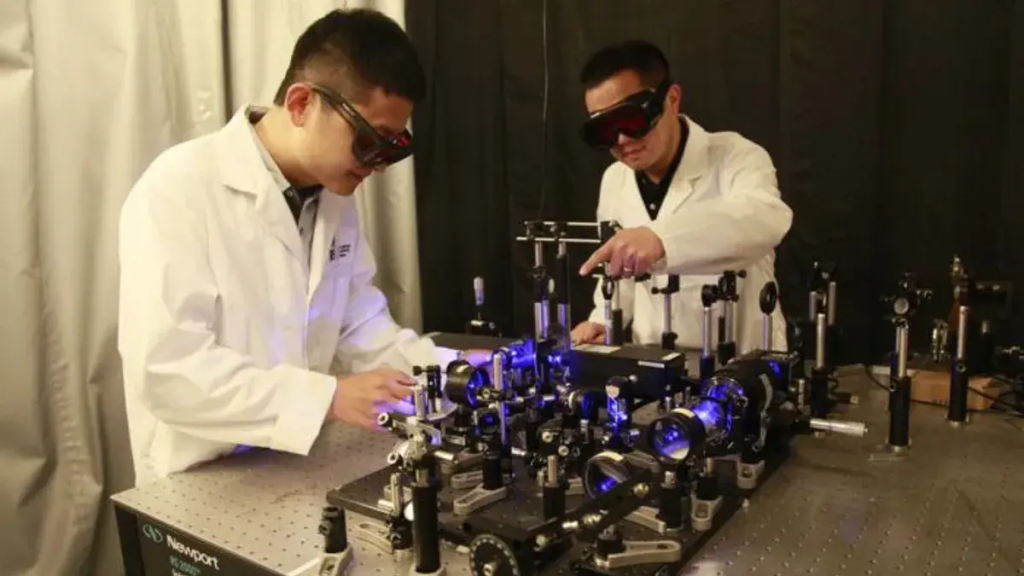In the realm of high-speed imaging, where capturing the swiftest of movements demands cameras that often carry exorbitant price tags, a remarkable breakthrough is poised to democratize the field. Researchers have unveiled an ingenious camera that promises to deliver ultrafast imaging without breaking the bank.
Gone are the days when achieving high-speed imaging required deep pockets and specialized equipment. In a game-changing paper titled “Diffraction-gated real-time ultrahigh-speed mapping photography,” a team of researchers, led by Jinyang Liang from the Institut national de la recherche scientifique (INRS) in Canada, unveils the DRUM camera—a groundbreaking approach to ultrafast imaging.
What sets the DRUM camera apart is its ability to match the imaging speed and spatial resolution of its high-priced counterparts while utilizing readily available components, potentially costing less than a mere fraction of current ultrafast cameras, some of which can carry staggering price tags exceeding $100,000.
This groundbreaking camera can capture dynamic events at an astounding 4.8 million frames per second in a single exposure. The researchers showcased its prowess by imaging the rapid dynamics of femtosecond laser pulses interacting with liquids and laser ablation in biological samples.
Jinyang Liang envisions a future where DRUM photography catalyzes advancements in biomedicine and aids in the development of automation-enabling technologies like lidar, where speedier imaging enhances hazard sensing accuracy. Importantly, the DRUM photography paradigm is incredibly versatile, compatible with a wide range of CCD and CMOS cameras, preserving their high sensitivity and other advantages.
In the world of ultrafast imaging, complexity and cost have traditionally been formidable barriers. Today’s methods often require intricate setups and come with trade-offs between frame count, light throughput, and temporal resolution. Enter the DRUM camera, which introduces an innovative time-gating method known as time-varying optical diffraction.
Conventional cameras utilize gates to control when light reaches the sensor. On the other hand, time-gating involves rapidly opening and closing the gate multiple times before the sensor reads the image, effectively creating a short, high-speed movie of the scene. What sets Jinyang Liang’s breakthrough apart is the application of time gating using light diffraction. By manipulating the tilt angle of periodic facets on a diffraction grating, multiple copies of incident light travel in different directions, allowing the gating of frames at various time intervals. These frames are subsequently amalgamated to generate an ultrafast movie.
The transformation of this concept into a functional camera necessitated a collaborative effort from a multidisciplinary team, blending expertise in physical optics, ultrahigh-speed imaging, and MEMS design. The linchpin of this endeavor was the utilization of a digital micromirror device (DMD), a commonly employed optical component in projectors, in an unconventional manner. DMDs are cost-effective and stable, requiring no mechanical movement to produce the diffraction gate.
The DRUM camera devised by the team excels in capturing seven frames in each short movie. To showcase its capabilities, they recorded laser interactions with various substances, including distilled water. The camera’s time-lapse images beautifully portrayed the evolution of a plasma channel and the birth of a bubble in response to a pulsed laser, validating predictions rooted in cavitation theory. Furthermore, the researchers captured the bubble dynamics of a carbonated beverage and fleeting interactions between an ultrashort laser pulse and a single-layer onion cell sample.
The future for DRUM photography looks promising, with the researchers dedicated to enhancing its performance by increasing imaging speed and sequence depth. They are also poised to explore the realm of capturing color information and extending the camera’s applications, including its potential incorporation into lidar technology.

